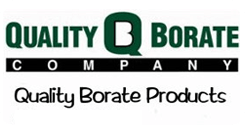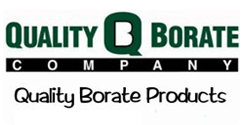FREQUENTLY ASKED QUESTIONS ABOUT BORASOL-MC™
-
Q1. I have mold in my basement (or attic). What should I do?
Often times a wet basement due to non-working gutters or an improperly vented exhaust fan causes mold in basements or attics. There are two steps to take care of the problem. First, remove the source of the water infiltration. Second, treat for the mold removal and its return. Most often, these are within the abilities and resources of the ordinary home owner.
-
Q2. I have toxic black mold in the shower. What can I do?
First of all, there are about 100,000 different species of mold. Most of them are of the color black. The stachybotris species (the toxic one) known as the toxic mold can be identified only by a trained mycologist (a scientist trained in microbiology). Quality Borate has the EPA mold treatment guidelines posted in the “View Guidelines” for proper cleanup for mold (found under Technical Data Sheets).
-
Q3. Do I need BoraSol-MC™ and BoraSol-WP® for getting rid of mold?
BoraSol-MC™ is effective against mold, mildew and algae on the outsides of wood and wood products. BoraSol-WP® is a borate that is easily drawn into the center of a piece of wood where wood boring insects inflict damage on the wood (termites, Carpenter ants, Powderpost Beetles, etc). Applying both chemicals in one application gives total protection of wood and wood products.
-
Q4. What makes BoraSol-MC™ product better than other moldicides found in the box stores?
First, the BoraSol-MC™ is delivered to your door. Second, it is sold as a concentrate, which when diluted is still 25x more concentrated than the ready to use products available in a spray bottle. When used in a garden sprayer, it makes short work of any larger projects. Second, the price is competitive if not lower compared to most ready to use, off the shelf products.
-
Q5. Are there surfaces that BoraSol-MC™ does not work on, such as glass, vinyl?
Mold requires air, moisture and food in order to grow. Mold food has carbon in it, as found in cellulose in wood and wood products. It will not grow on glass, for example, unless it has some form of carbon containing material on it. Soapy residues in showers on vinyl plastic or wallpaper can support mold in some cases.
-
Q6. What kind of shelf life does BoraSol-MC™ have?
BoraSol-MC™ is stable indefinitely under normal storage at room temperature.
-
Q7. How long will it take to receive my order from QualityBorate?
All orders are normally shipped the same day the order is received (after PayPal clears the credit card transaction, Quality Borate is notified and ships the order. Quality Borate does not receive your credit card number from PayPal). Shipping is done by UPS Ground only, from Cleveland, Ohio.
-
Q8. I am a victim of a flood! I need some fast help? What can you do for me???
After the soaked insulation and wallboard is removed per the EPA instructions (View Guidelines) make sure the silt or other dirt is removed with thorough rinsing. Dry. Apply BoraSol-MC™ per the mixing instructions to prevent any mold or mildew spores from starting to grow. Seal up the drywall. Do not ignore the mold prevention step. Many people regretted not taking this step (after Katrina) and had to repeat the drywall replacement.
-
Q9. What is BoraSol-MC™?
BoraSol-MC™ is a concentrated material that when diluted with water will protect the surfaces of wood and wood products from most mold and mildew types of fungi. Brush, spray and dip methods of application can be used.
BoraSol-MC™ can be used alone for controlling mold growth on wood and other construction materials, or with BoraSol-WP® for complete protection of wood from surface mold, insect attack and wood rot attack. The active ingredient in BoraSol-MC™ has a 60 year history of successful use and is registered by the EPA.
The BoraSol-MC™ active ingredient is known as a “quaternary amine” material. It has a very small electric charge. When the electrical charge of the active material comes in contact with a mold cell, it pierces the cell wall of the mold and the cell will die. The active ingredient will control the spread of mold cells by destroying the spore’s cell wall when a spore lands on the treated wood’s surface.
A 5% solution of BoraSol-MC™ in a 15% BoraSol-WP® solution has successfully passed the ASTM D3273 test, Standard Test for Resistance to Growth of Mold on the Surface of Interior Coatings in an Environmental Chamber. Common molds found in houses that were tested were: Aureobasidium pullulans, Aspergillus niger and Penicillium Sp.12667.
-
Q10. How is the BoraSol-MC™ solution prepared?
The BoraSol-MC™ is packaged in two sizes of containers. The smallest amount will make 1 gallon of RTU (ready to use) solution. Carefully pour the entire contents (6.4 fl.oz.) of the 8 fl.oz. bottle into 3 quarts of clean water and add the triple rinsate of the bottle to the bulk solution. Mix well and top off the solution to one gallon with additional water.
The quart size bottle of BoraSol-MC™ will make 5 gallons of ready to use Solution. Each gallon of RTU solution will cover 200 to 500 sq.ft. depending on the texture, porosity and type of surface. Treat all surfaces to the point of refusal (run off).
-
Q11. How does the BoraSol-MC™ actually work?
The Advanced Explanation - If this is TMI (Too Much Information)? Scroll to bottom for an Easier Explanation.
The BoraSol-MC™ active ingredient is called a quaternary ammonium compound. This means that there are four carbon containing groups chemically bonded onto a single nitrogen atom. This creates a positive electrical charge on the nitrogen atom. Two of the four carbon groups (alkyl chains and benzyl rings) are large groups of carbon and hydrogen atoms that face away from the surface on which they have been applied. The charged end of the molecule (the nitrogen) attaches itself to the surface. Most surfaces have a negative charge, so the two charges form an ionic bond which holds the quaternary molecule in place in a monolayer on the surface. The two large carbon groups point outward from the surface and actually become hydrophobic, i.e. repels water because it is oily in character.
The alkyl group must contain 8-18 carbon atoms in order to have bactericidal activity. The bactericidal action of quaternary compounds has been attributed to inactivation of energy-producing enzymes, denaturation of proteins and disruption of the cell wall. These agents are bacteriostgatic, fungistatic and sporistatic, and also inhibit algae in the same manner.
The quats act against microrganisms differently than do chlorine and iodine compounds. They form a residual antimicrobial film after being applied to surfaces. Although the film is bacteriostatic, these compounds are selective in the destruction of various microrganisms. The quats may kill bacterial spores and can inhibit their growth. Quaternary ammonium compounds are more stable in the presence of organic matter than are chlorine and iodine containing sanitizers. Their bactericidal effectiveness is impaired by the presence of organic matter.
The quats are low in toxicity and can be neutralized or made ineffective by using any anionic detergent (soaps) and by many nonionic detergents. They are not recommended to be used in very hard water (with Calcium, Magnesium, Iron and Aluminum ). Effective levels start at 200 ppm. Quats should not be combined with cleaning compounds.
The Quats have the following major advantages: Colorless and odorless; Stable against reactions with organic matter; Resistant to corrosion of metals and not affected by moderately hard water; Stable against temperature fluctuations, and with long shelf life; Effective against mold growth; Good surfactant that provides a residual antimicrobial film.
An Easier Explanation
BoraSol-MC™’s active ingredient is a ”quat”, which has an electrical charge on the molecule. This charge helps to hold the molecule onto the surface to which it has been applied. The Quat also has two large groups of carbon containing material, which stick out away from the surface. These two groups disrupt the cell walls of bacteria, fungi, and algae. This is like poking holes in the skin of the cell walls. It also upsets the energy cycle of microbial forms of life (mold, mildew, bacteria, algae). Since the quat does not react chemically with the microbe, it is not consumed while doing its job. It pokes a hole in the microbe and continues to hang onto the surface – ready to puncture the wall of the next microbe. That is why it is long lasting.
-
Q12. After I treated the moldy wood, It looks like nothing happened. The black mold did not go away. Did I do something wrong?
If the mold is very mature, it may have established a root system in the wood. Or it may have a thick growth on the top of the wood. It is always advisable to wipe any thick or old mold off of the wood surface with a wet sponge before adding the BoraSol-MC™. Some persons like to see instant color changes and treat with 2% bleach. This is OK but this will not prevent the mold from re-growing on the surface from new spores taking root. (Repetitive use of bleach will oxidize the wood fibers and roughen the surface). When the smell is gone, the activity is gone!
The BoraSol-MC™ will take time to destroy the mold cell walls. You have not done anything wrong.
See BoraSol-MC™ Warranty.

